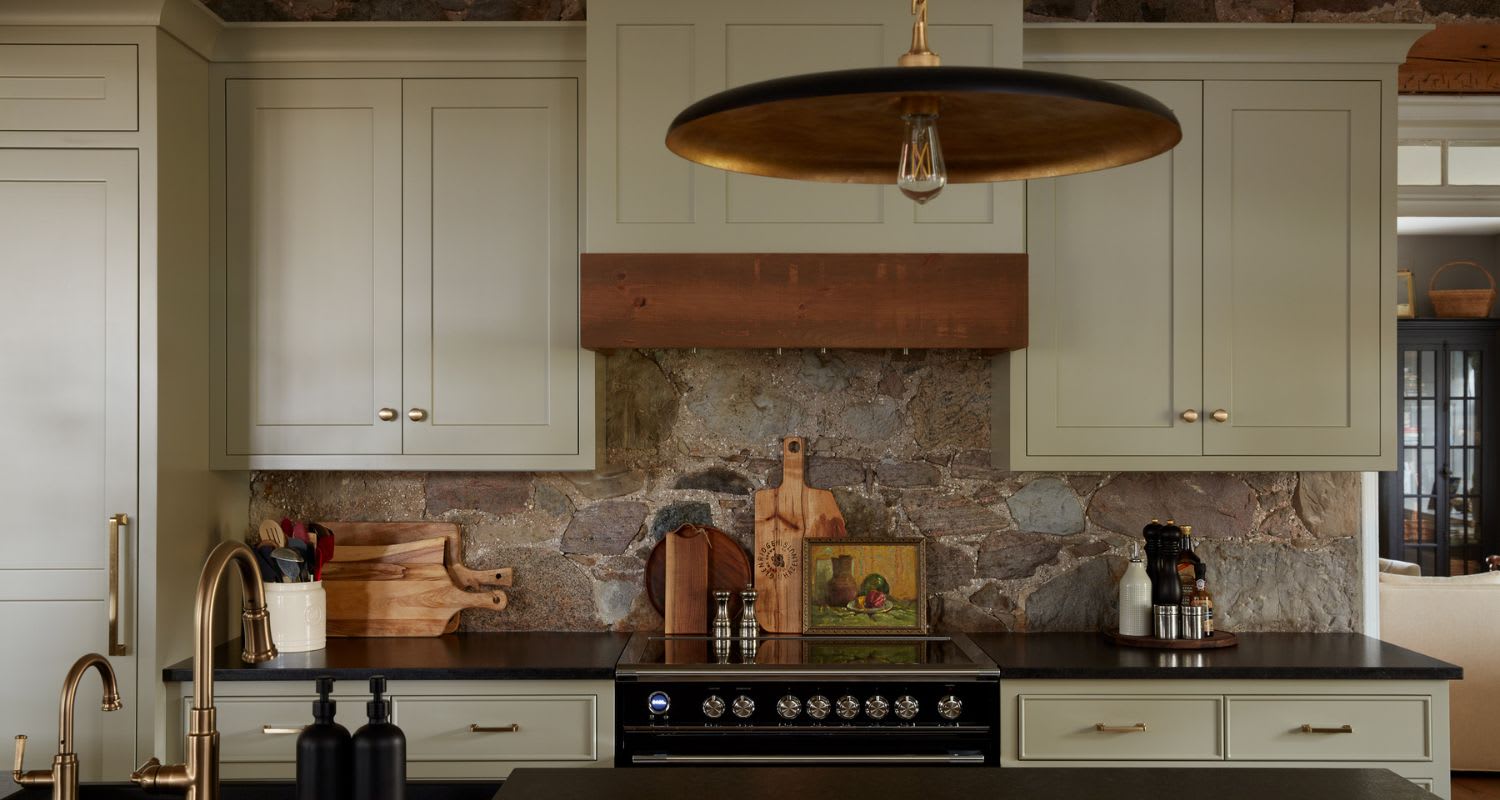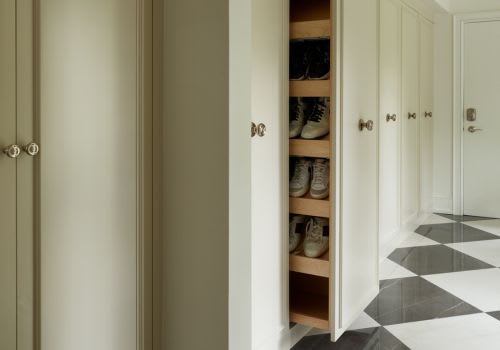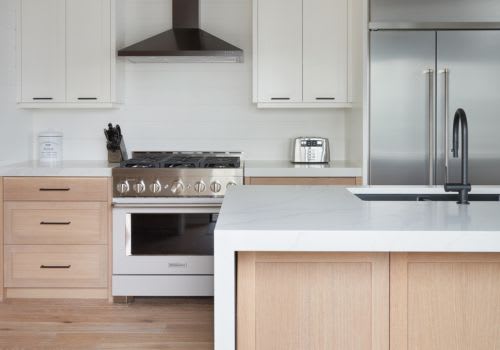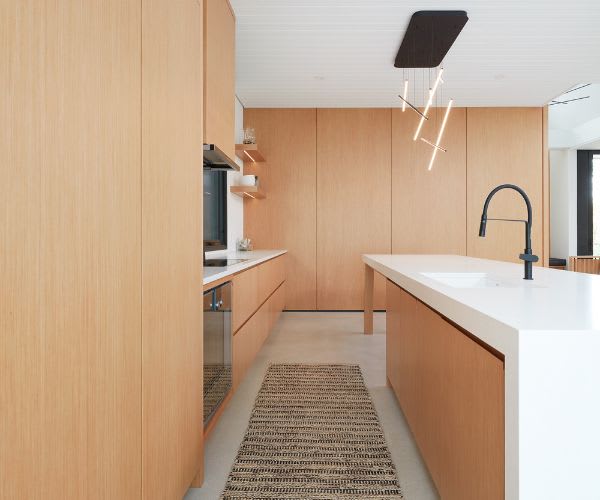
Cabinetry hardware is often called the "jewelry" of your home. Just as a well-chosen necklace or pair of earrings can elevate an outfit, the proper hardware can enhance the beauty and functionality of your cabinetry. While hardware might not be your first decision in your design process, it plays a crucial role in defining your space's overall aesthetic and usability. In this post, we'll explore the distinctions between kitchen knobs, pulls, and finger-pulls for cabinets, offering expert insights to guide you in selecting the perfect hardware for your home.
The Importance of Cabinetry Hardware
When designing your cabinetry, hardware might seem like a minor detail, but it can profoundly impact the look and feel of your space. The right hardware complements the design, adds functionality, and even contributes to the longevity of your cabinets. Whether you're going for a classic, contemporary, or modern aesthetic, your choice of finger-pull handles, knobs, or other hardware will either harmonize with or disrupt your design.
Key Considerations:
- Design Cohesion: Hardware should align with the overall style of your space, whether it be kitchen knobs, pulls, or finger-pull handles.
- Functionality: Consider ease of use, especially in high-traffic areas like kitchens.
- Durability: High-quality hardware, including finger-pulls for cabinets, can extend the life of your cabinets.
Knobs vs. Pulls: Where to Use Each
The debate between kitchen knobs and pulls is a longstanding one, with each option offering distinct advantages.

Traditionally, knobs are used on doors, and pulls (or cup pulls) are reserved for drawers. However, modern designs are breaking away from these conventions, offering new ways to use these classic options and integrating finger-pull handles into various parts of the home. This approach creates a cohesive and streamlined appearance while also offering practical benefits.
Pulls are generally easier to grip, especially when your hands are full or greasy, making them a popular choice in kitchens. Oversized vertical pulls or finger-pulls for cabinets are recommended for pantry or larger cabinet doors. These make a bold design statement and ensure that the doors are easy to open, regardless of size.

Tips for Selecting Cabinet Hardware
Choosing the right hardware is more than just a design decision—it's about how you interact with your space daily. Here are some practical tips to guide your selection:
-
Consider Ergonomics: Ensure the hardware, including finger-pull cabinet options, is comfortable, especially for those with mobility issues.
-
Match the Finish: A consistent finish (e.g., brushed nickel, matte black) can unify your design.
-
Test Before You Buy: Try different options in-store, including finger-pulls for cabinets, to see what feels best.
-
Balance Aesthetics and Functionality: Don’t sacrifice usability for style, particularly in frequently used areas like kitchens and bathrooms.
Visit one of our showrooms in Waterloo, Muskoka or Oakville to view our selection of cabinet hardware.
Pros and Cons of One-Touch and Finger-Pull Cabinets
When it comes to cabinetry, the choice of hardware goes beyond traditional knobs and pulls. Modern design trends have introduced alternatives like finger-pull cabinet hardware and one-touch mechanisms, each offering unique benefits and challenges.
Finger-Pull Cabinets
Finger-pulls are popular in modern design due to their streamlined and sleek look. They offer a subtle grip without the bulk of traditional handles, making them a popular choice for minimalist spaces.
Pros:
-
Provide a sleek aesthetic for a clean, uncluttered look.
-
A subtle grip is ideal for maintaining a minimalist design.
Cons:
-
Prone to showing fingerprints, requiring frequent cleaning.
-
May experience wear, especially in high-use areas.
Best Uses: Entertainment units, laundry rooms, low-traffic cabinets.
One-Touch (Push-to-Open) Cabinets
One-touch cabinet doors offer a sleek, handle-free, modern, and minimalist appearance. They are trendy in kitchens with a contemporary design focus.
Pros:
-
Minimalist design that eliminates the need for visible hardware.
-
Ideal for hidden or hard-to-reach spaces.
Cons:
-
Accidental bumps can trigger sensitive mechanisms.
-
Mechanisms can be more costly to repair or replace.
Best Uses: Hidden cabinets, under-island storage, contemporary kitchens.
Making the Final Decision
Choosing the proper cabinetry hardware is an essential step in the design process, one that can elevate your space from ordinary to extraordinary. By understanding the differences between knobs, pulls, and finger-pulls for cabinets, as well as considering the practical aspects of each, you can select hardware that not only complements your design but also enhances the functionality of your cabinets. Whether you're aiming for a timeless, contemporary, or modern look, the right hardware—be it kitchen knobs, pulls, or finger-pull handles—will be the perfect finishing touch for your cabinetry project.
Want to learn more?
Visit one of our showrooms in Waterloo, Muskoka or Oakville, and our showroom consultants will be happy to answer your questions and show you our options!
Cabinet Hardware FAQs
- Can I mix knobs and pulls in the same kitchen?
Yes, mixing knobs and pulls can add visual interest and functionality to your kitchen. Typically, knobs are used on cabinet doors, and pulls are used on drawers. However, mixing and matching hardware styles should be done thoughtfully to ensure a cohesive look. Need design help? Book a consultation with our team.
- Is it better to put knobs or pulls on cabinets? Knobs offer a classic, compact look and work well for smaller doors, making them easy to install. Pulls provide a larger grip, making them ideal for drawers and larger cabinets, and suit modern designs. Choose knobs for traditional aesthetics and space efficiency or pulls for contemporary style and better functionality.
- What material is best for cabinetry hardware? The best material for your hardware depends on your style preference and the environment of the space. Brass, stainless steel, and nickel are popular for their durability and timeless appeal. Matte black and bronze are also trending for a modern look.
- What is the best way to clean and maintain cabinetry hardware? Most hardware requires regular cleaning with a soft cloth and mild soap. Avoid abrasive cleaners, as they can damage the finish. For hardware in high-traffic areas, such as kitchens, it's essential to wipe down the hardware regularly to prevent the build-up of grease and grime.
- Are finger-pulls practical for all cabinets? Finger-pulls are practical for certain areas, such as low-traffic cabinets or those in minimalist designs. However, they may not be ideal for frequently used cabinets, particularly in kitchens, as they can show fingerprints and wear over time. Consider the cabinets' locations and how often they’ll be used before opting for finger-pulls.
- Can I replace my cabinetry hardware without replacing the cabinets? Absolutely! Replacing hardware is a cost-effective way to update the look of your cabinets without the expense of a complete renovation. Ensure the new hardware fits the existing holes or be prepared to patch and drill new holes if necessary.



